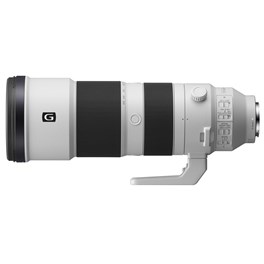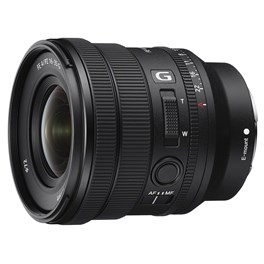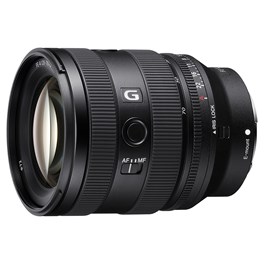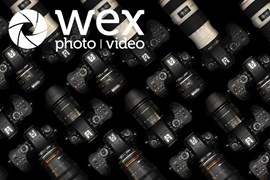
If you’re using one of Sony’s brilliant mirrorless cameras, the best Sony lenses will allow you to make the most of it. Sony’s range includes some of the finest cameras for photography and video, in both full-frame and APS-C formats, and its lens range is built with the same kind of attention to quality.
We’ve thought about the best Sony lenses for different use cases — but an important thing to note is that when we talk about ‘best’, we’re also talking about value for money. We could have filled this list with the most expensive professional glass in the Sony stable, each lens costing thousands of pounds, but that would realistically only be useful for a handful of people.
So, the lenses we’ve picked are not only brilliant, but are also sensibly priced for the average enthusiast. Throughout, we’ve also suggested several low-cost alternatives for those whose budgets are even tighter, as well as some premium options for those who have a bit more cash to play with.
Sony’s historic openness to third-party development for its lens mounts also means we have plenty of lenses on this list that are made by other manufacturers like Sigma and Tamron. We’re not fussy — if it’s a great lens that offers good value for money, and it’ll fit on a Sony-made camera, it gets a spot on this list. So, let’s get into it — and if you’re looking for a camera as well, check out our guide to the best mirrorless cameras, which includes several Sony options.
Best Sony portrait lens:
Sigma 85mm f1.4 Art DG DN Lens for Sony E
Lightweight, compact and packed with features. The Sigma 85mm f1.4 DG DN Lens is a beautiful portrait lens designed for use on full-frame mirrorless cameras. Like mirrorless systems, this lens is super-lightweight, coming in at half the weight of the original Sigma 85mm. The lens is made up of 15 elements in 11 groups, including 5 SLD and 1 Aspherical glass elements. It's wide max F1.4 aperture and 11-blade rounded diaphragm is able to produce wonderfully smooth bokeh and allows you to play with a very shallow depth-of-field to create highly impactful portraits. The focusing system that features a powerful stepping motor is capable of fast, smooth and quiet focusing which will be invaluable to professionals at weddings and other events.
£979.00 View
|
Pros:
Cons:
|
|
Lens reviews often involve a lot of charts, diagrams and hard data, which is all very well, but often what photographers want to know is something more elusive — how does a lens feel? Case in point — the Sigma 85mm f1.4 Art DG DN, which is an absolutely fabulous lens that just feels brilliant to use. Again and again, it produces crisp images that are just what you want for portraits. They’re superlatively sharp where they need to be, with brilliant, high-quality bokeh in the defocused areas.
Open up that aperture as wide as it’ll go and play with the shallow depth of field. The lens does exhibit some vignetting at F1.4, but for portraits it can be something of an aesthetic asset, drawing the viewer’s eye in towards your subject.
If you’re on a budget, then you can’t go wrong with the Sony FE 85mm F1.8 prime lens, which delivers consistently excellent performance and beautiful bokeh quality thanks to its nine-bladed aperture. Plus, mount it to an APS-C Sony camera like the A6000 and you’ll get an equivalent focal length of 127.5mm — still great for portraits.
Alternatively, if you have more to spend and you’re looking for something in the professional space, the Sony FE 85mm f1.4 G Master II is a dazzlingly sharp option.
Best Sony lens for wildlife:
Sony FE 200-600mm f5.6-6.3 G OSS Lens
Aimed at wildlife and sports photographers, this Sony FE 200-600mm f5.6-6.3 G OSS Lens will meet the needs of many enthusiasts and professionals looking for extra reach and pin-sharp clarity on their full-frame E-mount camera. Fully weather-sealed, it features an internal zoom, Direct Drive SSM autofocus system and Optical SteadyShot image stabilisation to ensure exceptional performance at all focal lengths.
£1,459.00 inc. Cashback View
|
Pros:
Cons:
|
|
For enthusiasts looking for a wildlife photography lens for Sony cameras, our top recommendation is the Sony FE 200-600mm f5.6-6.3 G OSS Lens. An outstanding big zoom, this hefty lens delivers crisp, clean image quality right the way though that giant focal range, with excellent suppression of distortion, chromatic aberration and flare. Its focusing action is powered by Sony’s Direct Drive SSM (Super Sonic-wave Motor), and not only is this system fast and accurate — it’s also whisper-quiet, which is an asset for wildlife photographers.
The maximum aperture of this lens is fairly narrow, and only gets more so as you zoom in — however, that’s an inevitable trade-off when it comes to keeping both the cost and weight of this lens to manageable levels.
If money is no object at all, then one of the best wildlife lenses ever made is the Sony FE 600mm f4 OSS G Master Lens, an uncompromising telephoto prime built for top professionals.
If you’re working to a tighter budget, then we’d say look at the Tamron 70-300mm f4.5-6.3 Di III RXD (for full-frame) or the Sony E 70-350mm f4.5-6.3 G OSS (for APS-C). In both cases you’re losing telephoto reach compared to the 200-600mm, but you’re still getting a powerful lens capable of producing sumptuous images. And in the case of the Sony E 70-350mm, remember that the crop factor means it’ll produce an equivalent zoom range of 105-525mm when mounted to one of Sony’s A6000-series cameras — so, pretty darn close!
Best Sony lens for landscapes:
Sony FE 24-105mm f4 G OSS Lens
The Sony FE 24-105mm f4 G OSS Lens is a wide-angle to short-telephoto zoom designed for Sony's full-frame E-mount CSCs. The lens offers a versatile 24-105mm focal range with constant f4.0 aperture, making it ideal for a host of applications including landscapes, portraits and travel. Perfect for videos and stills, the Direct Drive SSM motor ensures fast, quiet and precise autofocusing.
£799.00 inc. Cashback View
|
Pros:
Cons:
|
|
If you only listened to conventional wisdom, you could be forgiven for thinking that landscape photography begins at 10mm and ends at 24mm. But in truth, while wide-angles are definitely great for landscape shooting, in practice you’ll likely find yourself wanting to experiment with all kinds of different focal lengths. A standard or even telephoto perspective can have all sorts of applications in landscape photography, and as such, an all-purpose zoom like the Sony FE 24-105mm f4 G OSS is an excellent choice.
Offering dazzling sharpness all throughout its zoom range and at every aperture setting, this truly is the lens to do everything with. While it’s not too heavy, its premium design is moisture-resistant, and it boasts a constant F4 aperture throughout the zoom range. The optical design includes ED (Extra-low Dispersion) and AA (advanced aspherical) elements, and it produces superb resolution at all zoom and aperture settings.
If you’ve got less to spend, the Tamron 17-28mm f2.8 Di III RXD is an excellent, outdoorsy lens that’s well-suited to landscapes. Alternatively, the Sony FE 12-24mm f2.8 G Master is pretty much the apex of professional landscape lenses for the Sony E-mount system.
Best Sony lens for video:
Sony FE 16-35mm f4 G PZ Lens
Designed for Sony’s full-frame E-mount mirrorless camera bodies, the Sony FE PZ 16-35mm f4 G Lens exhibits the highest level of craftsmanship and optical design, offering exceptional image quality and performance throughout its zoom range. The lens is fitted with an invaluable PowerZoom mechanism and afforded a constant maximum f4 aperture, both of which allow for effective image & video capture.
£1,199.00 inc. Cashback View
|
Pros:
Cons:
|
|
This lightweight, high-performance lens works well for both photography and video, but is designed for video first. It uses a motorised Power Zoom mechanism to achieve a smooth, quiet zooming action that’s perfect for video shooting. Its optics have also been specifically engineered to minimise focus breathing, which refers to small but perceptible changes in magnification and field of view when a lens’ focal point is changed — something to avoid in video.
The fact that the lens is so light, and that its balance doesn’t change while zooming, means it’s well-suited to being used on a stabilising gimbal. The lens doesn’t feature built-in stabilisation of its own, but Sony’s full-frame cameras mostly do — and in any case, any serious video shooter is going to be using a gimbal anyway.
Alternatively, if you’re on a budget, you can’t go wrong with a 35mm prime for getting started with video. The Sony FE 35mm F1.8 is a cheap and cheerful lens with a hardy design and beautiful bokeh quality (there’s also a dedicated Sony E 35mm F1.8 lens for APS-C cameras, which produces an equivalent focal length of 52.5mm). And for video pros with cash to spend, the spectacular Sony FE 24-70mm F2.8 G Master II will deliver the goods.
Best Sony lens for travel:
Sony FE 20-70mm f4 G Lens
The Sony FE 20-70mm f4 G Lens is an all-in-one solution for stills and video projects. This ultra-wide standard zoom lens packs in powerful features alongside its unique focal range, including a constant f4 aperture, premium lens construction and fast autofocus. With natural circular bokeh and a fluorine lens coating repelling different contaminants, you can effortlessly create stunning imagery.
£1,059.00 inc. Cashback View
|
Pros:
Cons:
|
|
If you want a good day-to-day Sony lens for travel photography, we can recommend this one without hesitation. The Sony FE 20-70mm f4 G is an unusual lens, offering a little extra play at the wide end compared to the common 24-70mm configuration for a standard zoom.
This may not sound like much, but a 4mm difference at the wide end produces a much more profound change in field of view than it does at the telephoto end. A 70mm image doesn’t look all that different from a 75mm image, but put a 20mm image next to a 24mm image and the difference is immediately obvious. This gives you plenty of shooting versatility, and means you can get away without packing an extra wide-angle in your kit bag.
Lightweight and portable, offering brilliant image quality throughout its zoom range, the Sony FE 20-70mm f4 G keeps its weight and cost relatively low by forgoing F2.8 in favour of F4. In most situations, this will be fine — and you can always add an inexpensive Sony FE 50mm f1.8 to your bag for low-light shoots.
For a very affordable all-in-one lens, you may also want to consider the Tamron 28-200mm f2.8-5.6 Di III RXD for Sony E, a true all-rounder that weighs only 575g and can shoot at f/2.8 when used at its widest setting.
Best cheap Sony lens:
TTArtisan 35mm f1.4 Lens for Sony E - Black
This is a versatile lens for APS-C format cameras with a 35mm focal length & f1.4 aperture allowing for fast and efficient low light photography and providing shallow depth of field for creative bokeh effects. The manual focus design allows for greater control over focusing, which can be particularly useful for macro and portrait photography. Overall, the TTArtisan 35mm f1.4 APS-C is a versatile and affordable option for photographers looking for a fast prime lens for their APS-C format camera.
£89.00 View
|
Pros:
Cons:
|
|
Looking for a Sony lens but only have a very limited budget? This TTArtisan prime is just the thing — as long as you’re using an APS-C mirrorless camera. Producing an equivalent focal length of 52.5mm, this diminutive lens does without bells and whistles, to the point where it doesn’t even offer autofocus. The build doesn’t feel cheap though, with a reassuringly metallic chassis and a smooth focusing action that makes it a fun and absorbing lens to use. There’s nothing wrong with polishing up your manual focus technique from time to time, after all.
Sharpness is good without being exceptional, as you’d expect at this price. The lens is very capable in the centre, but there’s significant dropoff in the corners.
If you’re a full-frame user looking for a cheap lens, then the already-mentioned Sony FE 50mm f1.8 is once again a good choice. It doesn’t cost that much more than the TTArtisan lens, and it’s a highly capable little prime.
Best APS-C Sony lens:
Sigma 10-18mm f2.8 AF DC DN Contemporary Lens for Sony E
Sigma’s 10-18mm f2.8 AF DC DN Contemporary Lens for Sony E is a small, mighty, ultra-wide-angle zoom lens for mirrorless APS-C cameras. Despite its compact size, the lens delivers high-quality images with a premium construction of 13 elements in 10 groups, including a unique aspherical element. The durable and versatile lens is suited to travel photography, landscapes, and on-the-go creators.
£649.00 View
|
Pros:
Cons:
|
|
This brilliant lens from Sigma delivers an equivalent focal range of 15-26mm when mounted to a camera in Sony’s APS-C range. Weighing just 255g, it’s impressively lightweight for a lens that offers such brilliant image quality, thanks to a sophisticated optical design that incorporates 13 elements in 10 groups.
It’s the kind of lens that does a bit of everything. With a minimum focusing distance of 11.6cm, it’s brilliant for close-ups, but that wide angle of view (which is about as wide as it gets on APS-C) is also great for landscapes, architecture and big, sweeping vistas. The seven-bladed diaphragm means you can take advantage of that constant F2.8 aperture to produce images with brilliant bokeh. Also, the inner focusing system minimises focus breathing, meaning the lens is also excellent for video.
Looking for something even more affordable? The Sony E 30mm f3.5 Macro is a great lens, with a 1:1 magnification ratio that makes it a “true” macro lens, as well as a minimum focusing distance of just 9.5cm.

FAQs
What is the difference between a prime lens and a zoom lens for Sony cameras?
Prime lenses have a fixed focal length, offering sharper image quality and wider apertures for low-light performance. Zoom lenses, on the other hand, provide variable focal lengths, making them versatile for different types of photography without needing to switch lenses.
Are Sony lenses compatible with third-party brands?
Yes, Sony E-mount cameras support a wide range of third-party lenses from brands like Sigma, Tamron, and Samyang. These lenses often offer excellent quality and unique features at competitive prices.
Do Sony lenses have image stabilisation?
Some Sony lenses include Optical SteadyShot (OSS) stabilisation, which helps reduce camera shake, especially useful for handheld shooting. However, many Sony cameras have in-body stabilisation (IBIS), which works with non-stabilised lenses as well.
What is the best lens aperture for low-light photography?
Lenses with wide apertures like f1.4 or f2.8 are ideal for low-light photography. They allow more light to enter the lens, helping achieve brighter, sharper images with less noise.
How do I choose the right Sony lens for my photography?
Think about your photography style. Portraits benefit from lenses with wide apertures for bokeh, landscapes require wide-angle lenses for expansive views, and wildlife or sports often need telephoto lenses with fast autofocus. Once you know that, think about your budget and specific requirements to narrow down options.
How do we decide?
Our in-house photography experts, store staff and partners all work collaboratively to pour over our guides and tips articles. We also consider emerging trends and customer feedback to make sure our guides are always up-to-date and reflective of what people are truly looking for. By curating only the best products, our guides provide trustworthy recommendations, making it easier for customers to make informed choices with confidence.
If you would like more advice on any purchase our contact centre staff are here to help. Alternatively, you can reach us via email or social media. And don't forget. If you were to purchase anything based on our recommendations you'll be covered by our full returns policy
Buying Guides














